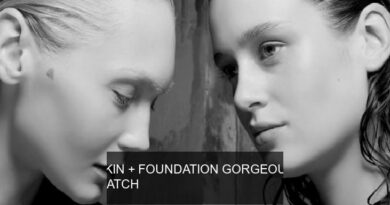Prp For Hair Loss Near Me
If you have been experiencing hair loss, you may be wondering whether you should consider a procedure that utilizes platelet-rich plasma (PRP). The procedure itself is not painful and typically takes less than 30 minutes. A medical professional will collect blood from a patient and spin it to separate the PRP from the red blood cells. The PRP will then be injected using smaller needles. While some discomfort is expected during the procedure, it should be minimal and will disappear within 24 hours. Afterwards, you can return to your regular activities.
Platelet-rich plasma
Known as PRP, platelet-rich plasma is derived from a patient’s blood. It contains a high concentration of growth factors and healing platelets. These factors help hair follicles to re-grow. The process of PRP therapy involves injecting this plasma into the scalp.
Platelet-rich plasma is a drug-free procedure that has been shown to improve hair growth in men and women. The plasma contains a variety of natural substances and growth factors that encourage hair re-growth. It also increases the density and thickness of individual hairs. It can also reduce hair shedding and promote healthy hair follicle regeneration.
PRP works with other treatments for hair loss, such as finasteride or minoxidil. In a recent study in Spain, PRP combined with 5% minoxidil topical solution resulted in better hair growth than finasteride alone. Patients treated with the combination showed significant increases in hair count, hair density, and hair percentages. Patients undergoing PRP therapy for hair loss typically require a series of treatments to achieve optimal results.
Micro-needling
Micro-needling is a non-surgical method of hair loss treatment. It works by creating tiny, controlled wounds in the scalp, which increases growth factors and activates stem cells. The wounds create new tissue layers and improve blood circulation, thereby increasing nutrients in the hair follicles. Many hair loss patients report increased hair thickness and count after treatment.
Micro-needling treatment for hair loss has also been shown to promote hair growth. It works by increasing blood flow, allowing cell nutrients to reach the scalp, and upregulating fibroblast growth factor. Micro-needling is an excellent way to stimulate stem cells, which result in increased hair regeneration. Studies have shown that micro-needling works to slow down hair loss, and many hair restoration clinics are now using it in conjunction with other treatment methods such as Minoxidil and platelet-rich plasma.
Cost
The cost of PRP injections for hair loss can be high, especially if you need to undergo multiple treatments. Some insurance providers will only cover treatments that treat an underlying medical condition. PRP treatments require advanced training and specialized equipment. The average cost for a PRP treatment is $500.
PRP hair restoration treatments cost between $400 and $900 per session, but many patients choose to have three or more sessions. The entire cost can be anywhere from $1200 to $3000. This cost does not include the cost of a high-end front-lace wig, which costs upwards of $4000.
The price of PRP injections for hair loss is based on the treatment area and its location. One session usually involves a blood draw, which is then processed and turned into an injectable. The specialist will then apply the injections to the hair follicles. There is no downtime, and the treatments usually last three to four sessions. The cost will vary according to the area treated, the person performing the treatment, and your insurance plan.
Side effects
Although side effects of PRP treatment for hair loss are rare, some patients have reported a slight increase in small blood vessels around their hair follicles. There have also been reports of excessive shedding after the treatment. However, these adverse effects do not appear to be permanent. Researchers are still conducting further studies to better understand the side effects of PRP.
The risks of PRP therapy for hair loss are minimal and are generally short-term. The procedure can cause minor pain, mild bleeding, redness, and soreness at the site of injection. These side effects usually subside on their own within a day, although some patients may experience some minor discomfort for up to a week. In some cases, mild bruising or swelling may remain. Patients may experience a mild headache or tenderness around the injection site. The recovery time for PRP therapy is also minimal.
Is it a proven treatment for hair loss?
PRP therapy is a procedure that uses your own blood to stimulate hair growth. It may seem like an interesting treatment, but it has some serious risks. Patients should be aware that it can cause bleeding, hematomas, and infections. It may also damage nerves. It is not recommended for patients on anticoagulants or those suffering from chronic liver disease.
Patients who have undergone PRP treatments have reported a great improvement in their hair growth and thickness. There is minimal downtime associated with the procedure. After the procedure, patients should refrain from alcohol and smoking for three days. They should also wait a full day before washing their hair. Patients should also consult with their physician before undergoing PRP treatment. A physician will review their medical history and assess the severity of their hair loss.




